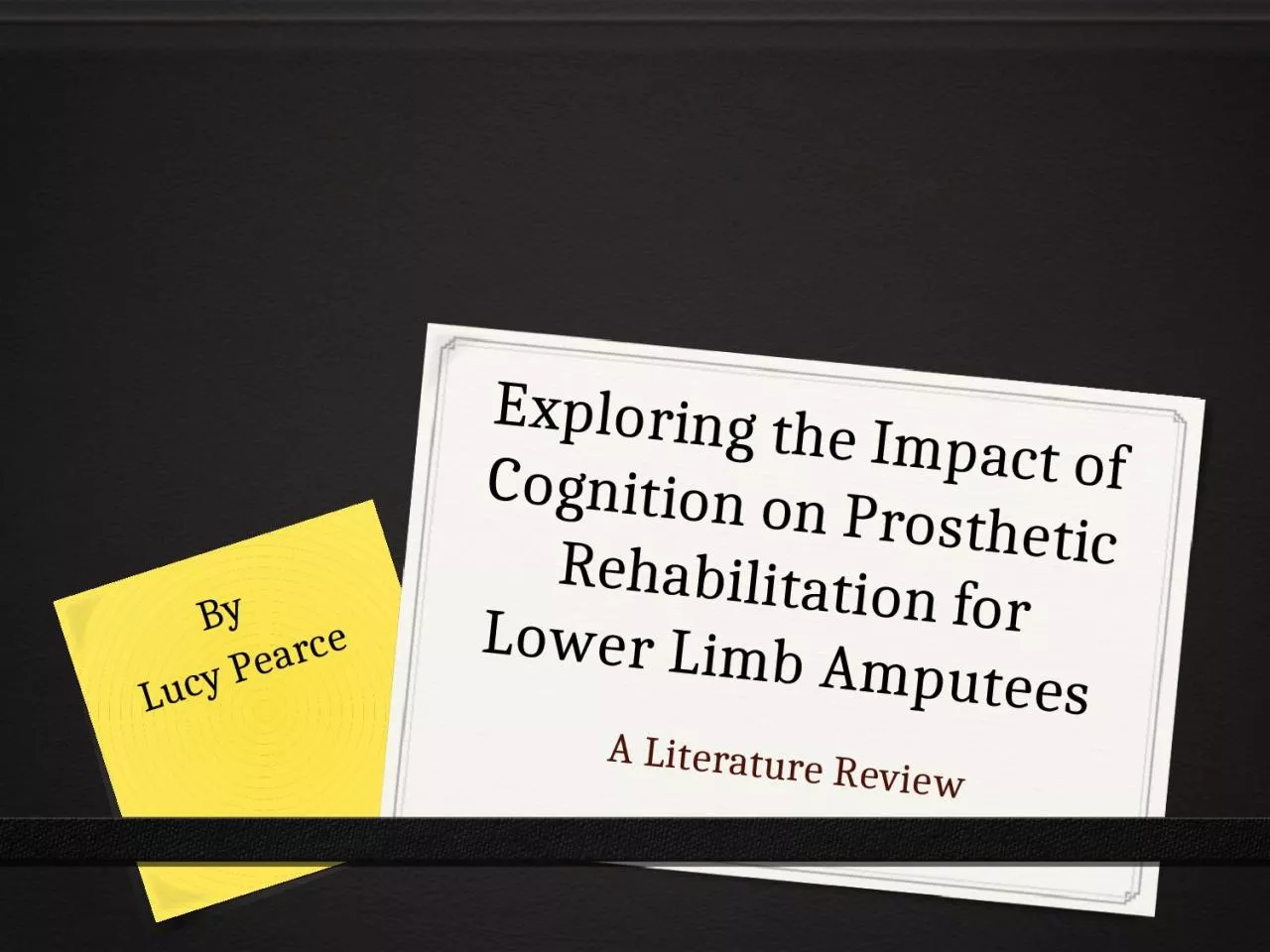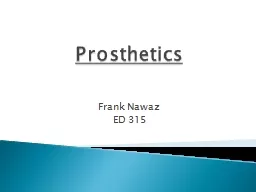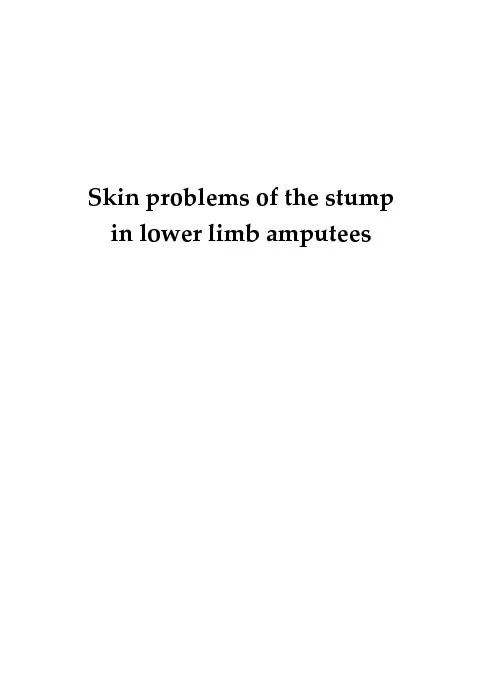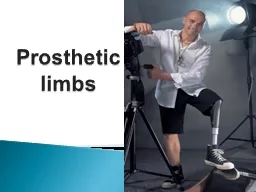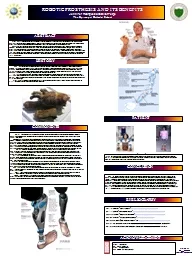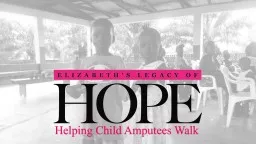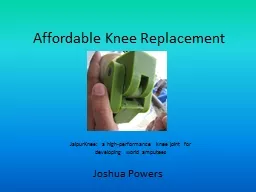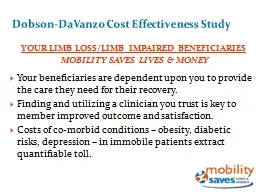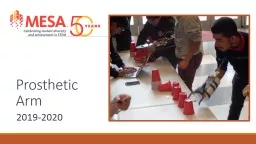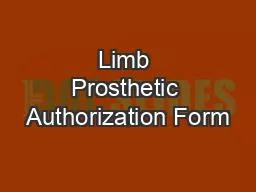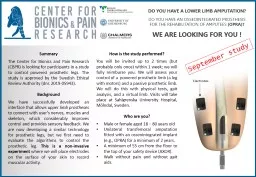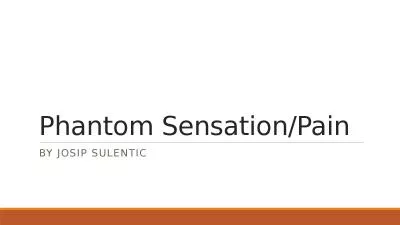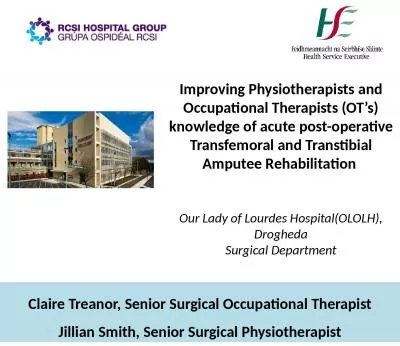PPT-Exploring the Impact of Cognition on Prosthetic Rehabilitation for Lower Limb Amputees
Author : deborah | Published Date : 2023-07-28
A Literature Review By Lucy Pearce Background Literature review undertaken as an assignment for preregistration BSc Hons course at London South Bank University
Presentation Embed Code
Download Presentation
Download Presentation The PPT/PDF document "Exploring the Impact of Cognition on Pro..." is the property of its rightful owner. Permission is granted to download and print the materials on this website for personal, non-commercial use only, and to display it on your personal computer provided you do not modify the materials and that you retain all copyright notices contained in the materials. By downloading content from our website, you accept the terms of this agreement.
Exploring the Impact of Cognition on Prosthetic Rehabilitation for Lower Limb Amputees: Transcript
A Literature Review By Lucy Pearce Background Literature review undertaken as an assignment for preregistration BSc Hons course at London South Bank University Inspired through experience within both inpatient and community prosthetic rehabilitation settings during clinical practice placement. Kelly K. McCoy, Psy.D.. Neuropsychologist. War Related Illness and Injury Study Center. Washington, DC VA Medical Center. “Historically, it is often the physical manifestations of a brain disorder that are the first to be described in the scientific literature and to be clinically treated. Some decades later, the cognitive impairments are recognized. Yet, it is the emotional and behavioral changes that are the most significant barriers to effective functioning in family, in work, in school and in other settings.” (Judd, 1999). Frank . Nawaz. ED 315. An artificial device used to replace a missing body part, such as a limb.. What is it? . Ancient times, the most notable one being the simple peg leg. . In the Middle Ages the first sophisticated prostheses were made, using strong and heavy iron to make limbs.. in lower limb amputees The publication of this thesis was generously supported by: Allergan Centrum voor Revalidatie, Universitair Medisch Centrum Groningen Medi Nederland Skin problems of the stump i The main object is to design a prosthetic limb and develop it to give motion that simulate the exact natural human motion . Introduction . Prosthetic limbs used to help those people who lose their lower limbs by many reasons (wars , diseases as diabetes and landmines ) to live their life as we are. . Jennifer Rodriguez and Elliot Felipe. The . E. piscopal Cathedral School . Prosthesis . is a replacement for a missing body part. Prosthesis not only is associated with missing arms and legs, but also with internal devices such as heart valves. Robotic prosthesis is mostly associated with the missing arm and leg, controlled by thought. The intention behind prosthesis is giving the person freedom and independence as well as the simple motor skills to command their lives.. Elizabeth’s Legacy of Hope helps child amputees . in developing . countries. Halima. Victoria. Ruth. They work in . three countries: . Sierra Leone, Liberia and India. India. Sierra Leone. Liberia. Joshua Powers. JaipurKnee. : a high-performance knee joint for developing world amputees. Addressing the Problem. Over 25 million people in the world today are suffering from the loss of a limb . Amputees looking to replace a missing limb turn to modern prosthetics . . MOBILITY SAVES LIVES & MONEY. Your beneficiaries are dependent upon you to provide the care they need for their recovery. . Finding and utilizing a clinician you trust is key to member improved outcome and satisfaction.. Kelly K. McCoy, Psy.D.. Neuropsychologist. War Related Illness and Injury Study Center. Washington, DC VA Medical Center. “Historically, it is often the physical manifestations of a brain disorder that are the first to be described in the scientific literature and to be clinically treated. Some decades later, the cognitive impairments are recognized. Yet, it is the emotional and behavioral changes that are the most significant barriers to effective functioning in family, in work, in school and in other settings.” (Judd, 1999). Learning Objectives. By the end of the session, participants will be able to:. Explain the rules to students,. Identify the major bones and joints of the arm, and. Create a prosthetic arm from available materials to pick up an object.. For ALL Faxes 503-416-3637 or toll-free 800-862-4831DateProvider Agency/Vendor NameTax IDContact PersonPhoneFaxMember NameDOB//Subscriber IDPrescribing Provider NamePhoneFaxPrimary Dx CodeDescriptionD dnr. . 2019-05943).. Background. We have successfully developed an interface that allows . upper limb. . prostheses. to connect with user’s nerves, muscles and skeleton, which considerably improves control and provides sensory feedback. We are now developing a similar technology for prosthetic legs, but we first need to evaluate the algorithms to control the prosthetic leg. . By JOSIP SULENTIC . Pain theory. Phantom Sensation . Any sensory phenomenon that is felt in the absent limb or a portion of it.. Up to 98% of amputees feel phantom sensation following an amputation. Phantom sensation is felt by spinal cord injuries, amputees (. T. ransfemoral. . and . T. ranstibial. . A. mputee . R. ehabilitation . Our . Lady of Lourdes . Hospital(OLOLH), . Drogheda. Surgical Department. Claire . Treanor. , Senior Surgical Occupational Therapist.
Download Document
Here is the link to download the presentation.
"Exploring the Impact of Cognition on Prosthetic Rehabilitation for Lower Limb Amputees"The content belongs to its owner. You may download and print it for personal use, without modification, and keep all copyright notices. By downloading, you agree to these terms.
Related Documents

